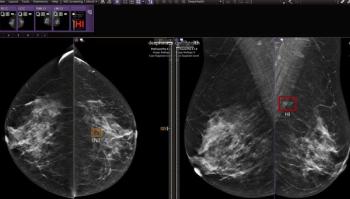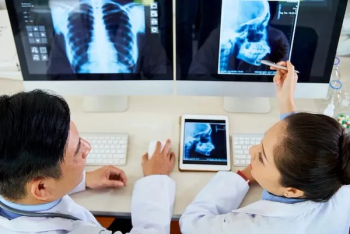
CO-RADS, AI COVID-19 Pneumonia Tools, Expert Experiences, and Bedside MRI
Diagnostic Imaging Weekly Scan -- May 1, 2020
Whitney Palmer: Welcome to Diagnostic Imaging’s Weekly Scan. I’m Whitney Palmer, Senior Editor. We’re back with you this week with the latest updates on the COVID-19 outbreak and its impact on the radiology industry.
Following the example of BI-RADS and Lung-RADS to categorize the severity of disease, a group of Dutch researchers this week released CO-RADS, a system designed to not only help you determine the extent of a patient’s disease on CT scans, but to also streamline the language in your structured reporting. Outlined in
Although we’re several weeks into this pandemic, radiology practices can still benefit from hearing about the experiences of others in the industry. In an article published in the
There’s been a great deal of conversation about whether artificial intelligence tools can actually help you in identifying or managing patients who are COVID-19 positive. In a study published this week in
No doubt you’ve experienced significant changes to your workflow, your imaging volume, and your bottom line. And, you might be wondering how these shifts could be affecting the radiology industry as a whole. To answer those questions, Dr. Krishna Nallamshetty, President of Radiology Associates of Florida and Executive Vice President of Radiology Partners shared his
And, finally, news has continued to emerge this week on the incidence of stroke and other neurological and vascular complications in patients who are COVID-19 positive. Scanning these patients with MRI can be tricky because many are too sick to move, and doing so presents additional safety challenges. To address this problem, a handful of institutions have begun using Hyperfine, a portable, bedside MRI system, to scan patients and identify significant problems. Northwell Health is one of these facilities, and Diagnostic Imaging had the opportunity to talk with Dr. Michael Schulder, co-director of radiosurgery and stereotactic radiation and director of neurosurgery, about his facility’s experience with this tool and the impact it’s making. Here’s what he had to say.
Newsletter
Stay at the forefront of radiology with the Diagnostic Imaging newsletter, delivering the latest news, clinical insights, and imaging advancements for today’s radiologists.




























